Pattern Focus: Buffalo Check
http://decor-ideas.org 03/30/2015 21:13 Decor Ideas
Traditional buffalo check, also known as buffalo plaid, is a heavy woven fabric made of intersecting blocks of red and black. Popularized by tales of Paul Bunyan and Wild West cowboys, buffalo check has a cheery appeal and many applications in the home. Here are some of the best ways to use the age-old pattern.
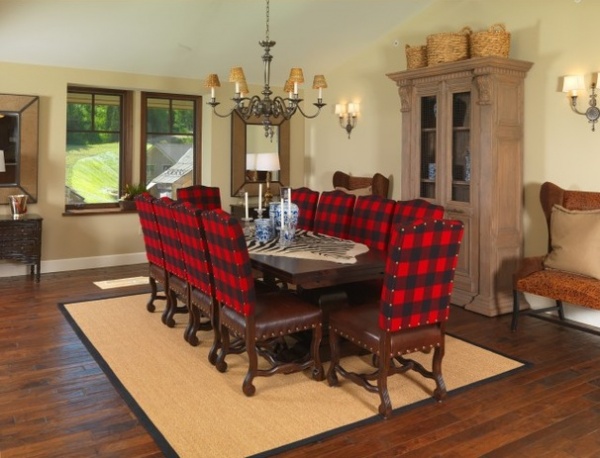
Buffalo check is widely regarded as a true American pattern. It’s an unofficial national symbol, like apple pie, baseball — and even the buffalo.
Except buffalo check isn’t an American design. It’s a many-centuries-old Scottish pattern originally called Rob Roy MacGregor Tartan. The pattern emigrated from Scotland to North America by way of Big Jock MacCluskey, a Scottish Highlander who traded woven tartan blankets for buffalo pelts in the Dakotas before settling in Connecticut.
Although still made in its authentic red and black, buffalo check has expanded from use in blankets and kilts to drapery, upholstery and more, and comes in all sorts of colors.
With its signature large-size blocks, buffalo check is made of two or three colors. Nowadays one of the colors usually is white. Buffalo check fabric is similar to gingham and differs only in scale. Buffalo checks range from about 1½ to 6 inches in size, while gingham checks are ⅛ to ¼ inch.
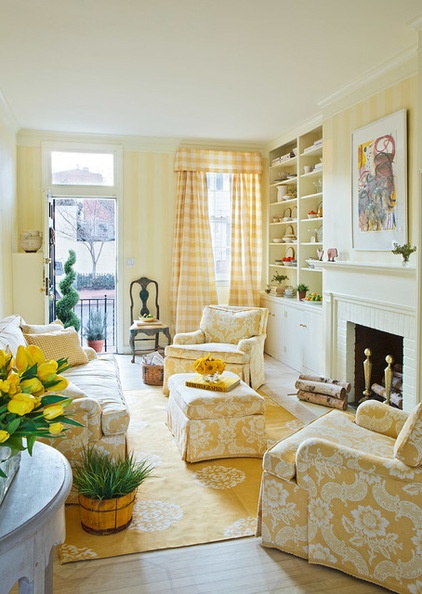
Advantages of Buffalo Check
Allows for more pattern diversity. Despite its strong geometric design, buffalo check doesn’t tend to compete with other patterns. Because it’s balanced by bands of stripes in both directions, it reads as more grounded. Here, buffalo check drapery creates balance between the wide tonal stripes on the walls and the two softer, more organic patterns on the area rug and upholstery.
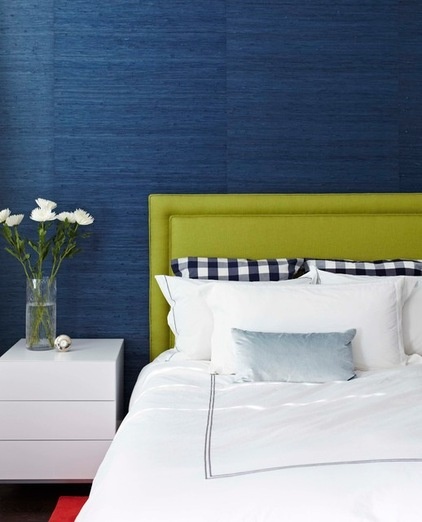
Creates a graphic punch. Buffalo check creates a powerful focal point, particularly with high-contrast colors like black and white. Imagine this bed without the buffalo check pillows. Although still attractive, it wouldn’t be nearly as striking — or memorable.
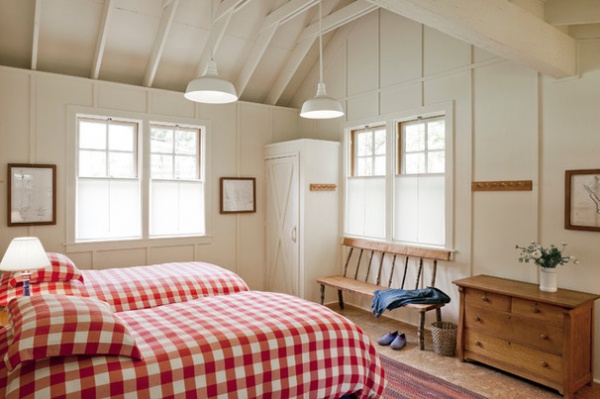
Creates a fresh, farmhouse aesthetic. Buffalo check, especially the red and white variety, evokes a bucolic, fill-your-lungs-with-fresh-country-air sort of feeling. As shown in this sweet bedroom, there’s no fabric pattern that can so effortlessly elicit the same pastoral aesthetic.
But this brings up one disadvantage of buffalo check: If overused or not done correctly, the pattern can look campy or picnic-y.
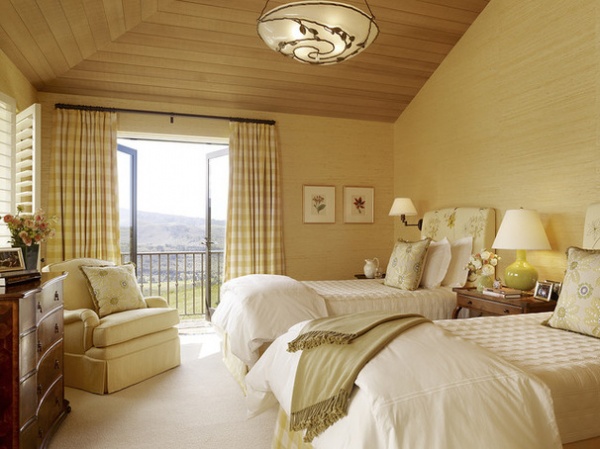
Best Applications
Drapery panels and Roman shades. The boldness and straight lines of buffalo check visually read well when it’s used for drapery. If you’re standing on the opposite side of the room, the checkered pattern can still be made out and doesn’t morph into a plane of mushy obscurity. The squareness of the buffalo checks also lends itself nicely to simple Roman shades.
Remember that high-contrast colors, like black and white, will draw more attention, while more muted hues will recede, like in this example. Here, the restful colors of the fabric don’t detract from the beautiful view outside the bedroom window.
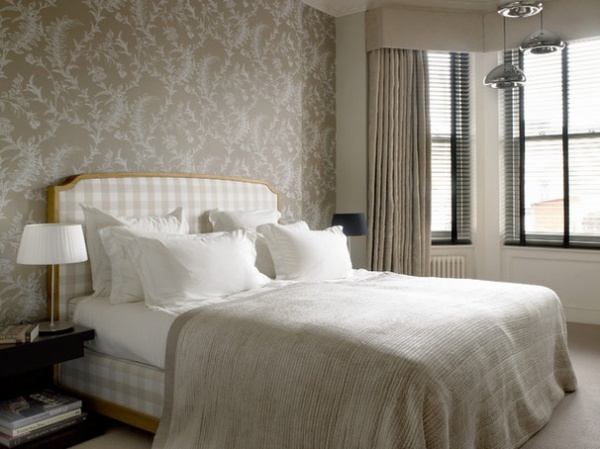
Upholstered headboards. Instead of relying on a patterned bed covering for visual interest, consider upholstering your headboard in a buffalo check. Flat upholstered headboards, like the example shown here, are the best shape for a buffalo check fabric. A tufted headboard will distort the check pattern and may appear unsettling.
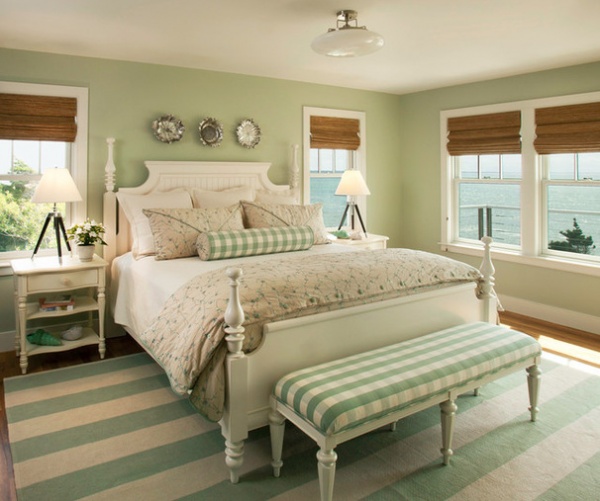
Secondary pieces. Smaller pieces of furniture and accessories are ideal candidates for buffalo check fabric, especially if you tend to be pattern-shy. This romantic bedroom has a light green and white check on a bench top and a bolster pillow to tie the room together. Dining chairs (seats, backs or both) are also popular choices for buffalo check.
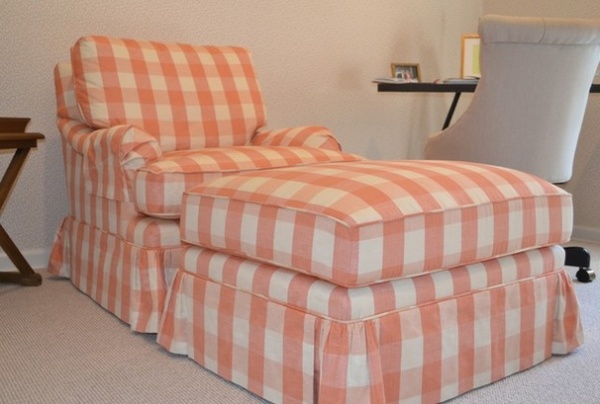
Medium-size upholstery. Buffalo check looks dreamy on upholstered seating, but the fabric tends to work best on smaller to medium-size pieces, such as chairs and ottomans. Not that it can’t look great on a full-length sofa, but it could be overwhelming, depending on the fabric’s scale and colors.
Paula Novello of Creations in Fabric & Design recommends considering the proportion of the buffalo check as well as the furniture shape and components, such as arms, cushions and skirts. She also cautions to look at the repeat of the fabric and measure the sizes of all the chair elements for scale appropriateness. Some buffalo checks may be too large or too small for some pieces. Novello says that the coral and white fabric shown here is a 3-inch check with welting cut on the bias. Most important is the placement of the check, wherever you are using it. “That is what will make or break any project,” she says.
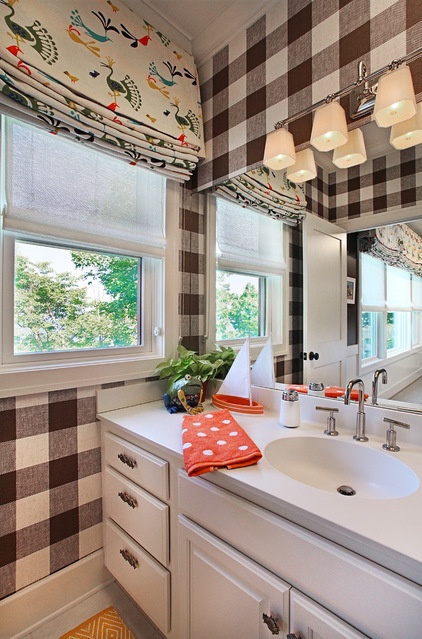
Walls in small spaces. A bold wall pattern like buffalo check is ideal for an intimate space such as a powder room or small bathroom. In larger rooms the pattern could read as too busy and disorienting.
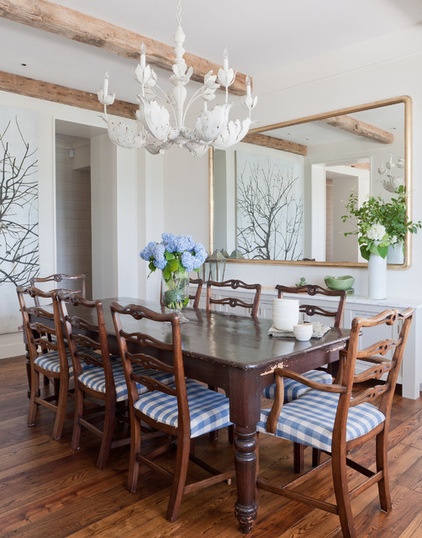
Cost: In terms of cost, buffalo check fabric could be likened to women’s shoes. You can find some that are quite budget friendly and others in the Jimmy Choo range. “Today you can find buffalo checks printed or woven on silk, cotton, blends, wools and even embroidery on top of the check,” Novello says.
A loose ballpark range for the fabric cost is about $30 per yard for upholstery-weight cottons to around $150 per yard for high-end silks.
More: Pattern Primer: How to Pair Different Prints
Related Articles Recommended












